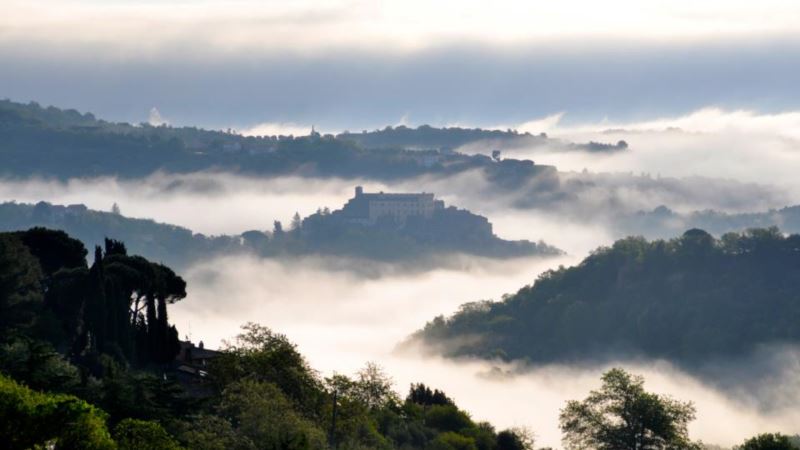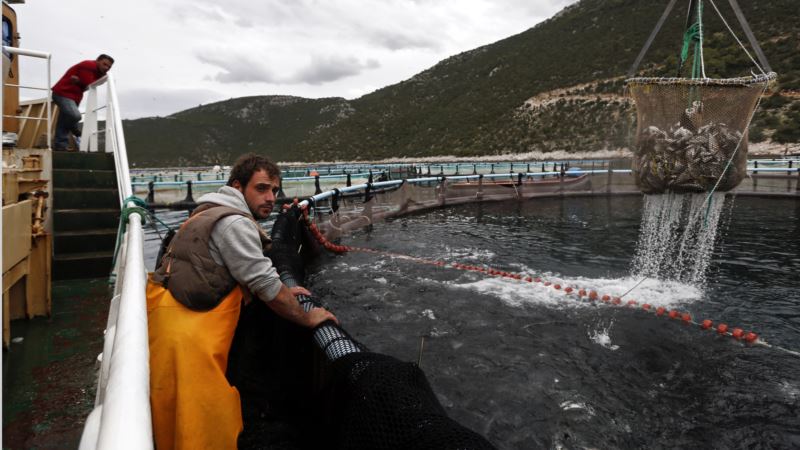A sense of foreboding hangs over Italy’s mountainous heartland after last Wednesday’s town-flattening earthquake and more than 2,000 aftershocks. In the central regions of Lazio, Umbria and Marche, temblors are just one of the challenges facing inhabitants who’ve turned increasingly fatalistic about their prospects and mistrustful of a government they say ignores them and has failed to follow up on economic development plans. The postcard-perfect regions – with their pastures of sunflowers and poppies, abundant vines, rows of ancient olive trees and medieval hilltop stone towns – have battled for years to offset the decline in commercial agriculture. They’ve desperately explored ways to refashion themselves as arts venues, tourist destinations and centers of artisanal trades and crafts. But the 2008 financial crash sent the regional tourism industry into a tailspin from which it has not yet recovered, and slowed significantly the flow of richer north Europeans buying properties as vacation and retirement homes. Unrealistically high price tags leave properties lingering on the market for years. Stagnant economy Most images of economic hardship focus on the country’s south, the Mezzogiorno, which has long lagged the north in terms of economic development – some of it a consequence of not-so-benign neglect by Bourbon monarchs. But poverty is not unique to the Mezzogiorno, and economic hardship has been creeping relentlessly farther north with each downturn and cycle of government cutbacks. Italy’s economy has been stagnant for years: According to the World Bank, the country’s gross domestic product was at $1.8 trillion last year, down from a peak of nearly $2.4 trillion in 2008. Economists blame high taxes, a rigid labor market, government overspending, burdensome regulation and a bloated bureaucracy, which they say has made Italy uncompetitive. Demographers also note that Italy is among the world’s most rapidly aging countries. While tourists might not see much to complain about in Lazio, Umbria and Marche – with their ravishing beauty, lakes and mountains – the last decade has been torrid for the regions’ inhabitants. Hardest hit are the young competing for ever-diminishing job opportunities – seen clearly in villages such as Amatrice, the community most affected by last week’s quake. Most of the young have little choice but to leave if they want to find lasting work – much as Mezzogiorno’s young people in the 1950s and ’60s migrated north to work in labor-hungry factories around Milano and Torino, fueling the country’s so-called post-World War II economic miracle. Veronica Deiana, 23, dreams about leaving Lazio’s ancient village of Celleno, population 1,000. "I don’t see any future in Lazio. My thought is to move abroad, possibly to Spain," she says. Deiana is one of the lucky ones: She has a retail sales job that took her a year to find, in the town of Viterbo, roughly 18 kilometers away. But it pays too little for her to think about moving from her parents' home. To save bus fare, she lunches daily with an aunt in Viterbo. Slow internet and few jobs Celleno is built on a spur of light, porous rock, formed from volcanic ash, that separates two basins along the Tiber River. Located between the lakes of Bolsena and Alviano, Celleno’s historic center was devastated in an 1855 temblor. Landslides have marked the village’s history, too. Wednesday’s quake, whose epicenter was 125 kilometers or almost 78 miles away, shook and shuddered Celleno’s medieval and modern houses for about 20 seconds. Apart from some minor cracks, there was little damage. The threat of quakes adds to a sense of disquiet among some young people in Celleno and other Lazio villages. Like many others in Italy’s center, they contend the government has neglected them. "Frankly, I do not think the government is doing anything for the young," Deiana says. Others air grievances about the snail-like pace of internet wiring for rural areas, or shoddy bricks-and-mortar infrastructure, or negligible economic development. A plan to convert Viterbo’s military airport into a commercial one was shelved after the 2008 economic crash. A highway intended to link the nearby rail hub of Orte to the ferry port town of Civitavecchia has been stopped 50 kilometers short of completion. Energizing efforts Yet, slowly but surely, the central regions have been trying to weather government austerity policies and to pull themselves out of the prolonged downturn. That inspires Andrea Oramai Sterpino to have more confidence in the future. The 27-year-old, determined to remain rooted in Celleno, recently opened a bar and small bed-and-breakfast enterprise, San Rocco. He also plans to start a restaurant with his mother. "I have always believed that our countryside and historic center is more beautiful than sometimes people here appreciate," he says. "For me, Celleno is a special place," he adds, "and if everyone leaves it would become just another ghost town. I like creating a community here and I want to show our traditions to tourists and foreigners. I think in the future there will be more economic opportunities." Banking on history – and investment Celleno’s Mayor Marco Bianchi shares Sterpino’s optimism. His model is the neighboring town of Bagnoregio, which recently has enjoyed a tourist boom and increased revenue. It benefits from influential American travel writer Rick Steves having devoted a book chapter to nearby Civita di Bagnoregio, a melancholic, once-abandoned hilltop village hewn from a rocky perch. Steves describes Civita as "this stunning little gem" that "has escaped the modern age mostly because of topography." Bianchi has been overseeing the restoration of Celleno’s historic castle, hoping to copy Bagnoregio’s success. And he’s collaborating with the neighboring mayor on marketing plans for festivals and arts exhibitions. "Celleno’s future rests with its history," Bianchi says. Bianchi says it is important for the Italian government to move forward with the long-term Home Italy plan that Prime Minister Matteo Renzi announced last week. It envisages overhauling architecture in seismic areas to withstand earthquakes and other natural disasters. "We need to prevent disasters and the impact of earthquakes," says Bianchi. "It could help also to bring jobs."
Italy’s Mountainous Center Struggles for Stability






